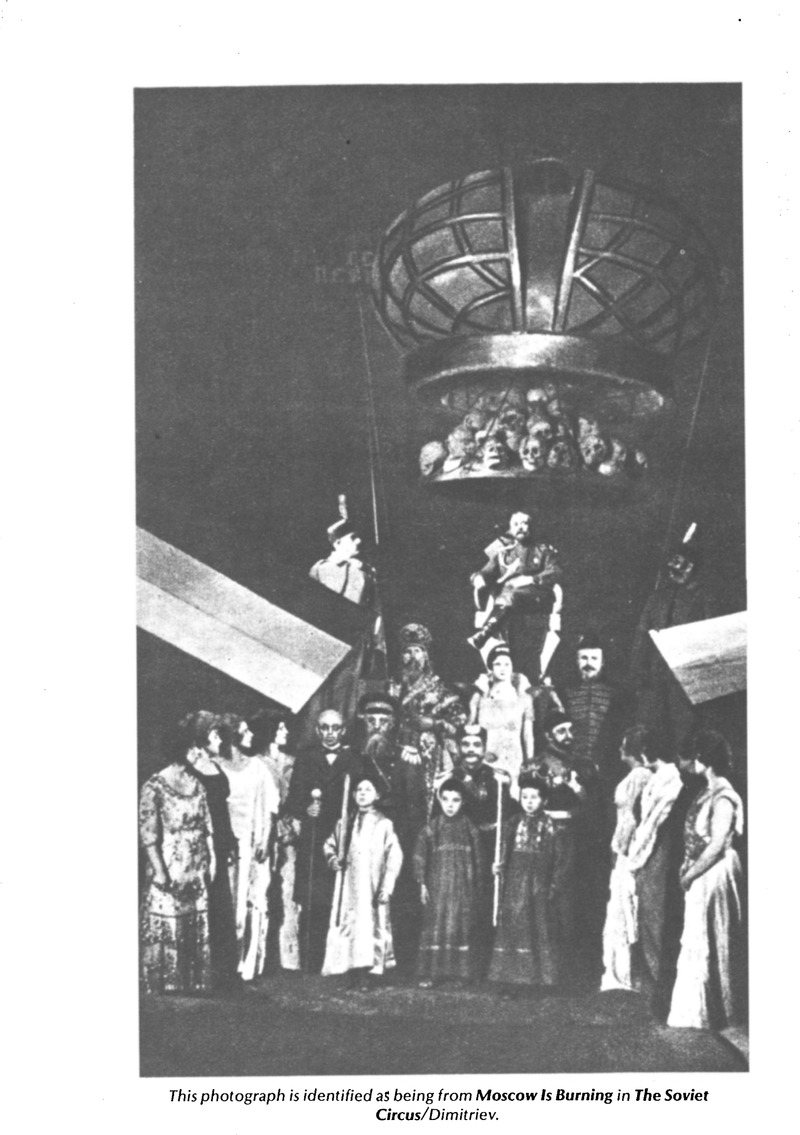No CrossRef data available.
Article contents
Moscow Is Burning (1930)
Published online by Cambridge University Press: 07 December 2021
Abstract

- Type
- Other
- Information
- Copyright
- Copyright © 1973 The Drama Review
References
1 The name of a hero who drove a train through a czarist barricade and was killed.
2 A famous revolutionary military leader.
3 Reference to January 9, 1905, known as “Bloody Sunday.” A procession of workers, led by the priest Gapon, were fired upon by the Czar's guards while trying to present a petition in St. Petersburg.
4 Al'perov writes that they were footmen.
5 The Imperial Manifesto of October, 1905, that set up the legislative body, the Duma.
6 Dimitri Federovich Trepov (1855-1906), one of the most hated reactionaries; Czarist Police Chief of Moscow until January, 1905, then Governor General and chief of the St. Petersburg garrison. He had dictatorial powers.
7 Red ribbon bows were worn by the Russian revolutionaries like the French wore the cockade during the French Revolution.
8 People from the workers’ district, Krasnya Presnya, in Moscow.
9 Count Sergei Y. Witte (1849-1915); Russian Prime Minister, 1903-6. A moderate conservative, he advised Nicholas II to grant the Constitution that provided a Duma.
10 Name given to extreme right-wing elements that supported anti-Semitism, absolutism and nationalism. They carried out pogroms against Jews and students.
11 In December, 1905, there was extensive street fighting in Moscow by workers’ shock troops.
12 Now called Pushkin Square, it is in the center of the business district. In 1905 it was in the workers’ district, Krasnya Presnya.
13 The articles state that “janitors” cleared away the bodies.
14 One of the Czar's loyalist crack units.
15 Ensignia of the Semyonovsky Regiment.
16 A popular refrain in Russian songs.
17 Georgie V. Plekhanov (1857-1918), orthodox Marxist who first worked with Lenin, but soon after 1903 joined the Mensheviks. In 1910, he again worked with Lenin.
18 The articles state that they were footmen.
19 Al'perov writes that some of the hoops were covered with tissue paper, and notes found in the back of the volume containing the text of Moscow Is Burningmention that slogans were printed on the paper.
20 Alexander F. Kerensky (1881-1970). By October, 1917, he was Prime Minister and Supreme Commander-in-Chief of the Provisional Government.
21 The Aurora was a cruiser that bombarded the Winter Palace, seat of Kerensky's government, on October 26, 1917.
22 A hydro-electric station of the Dnieper River.
23 A rich peasant landowner who uses hired labor, and later, during collectivization, one who refused to join a collective farm.




